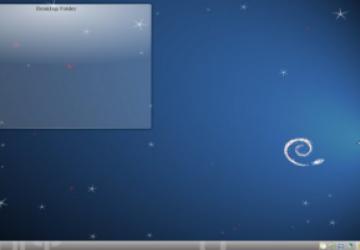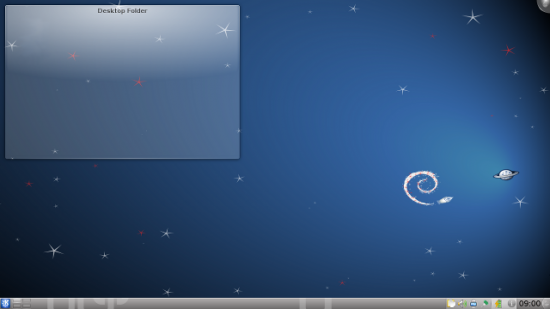Spotlight on Linux: Debian GNU/Linux 6.0 "Squeeze"

Debian is a bit unique in the Linux world. It's one of the most respected projects, it's one of the oldest distributions, and it is one of the most versatile systems. Debian comes in more architectures and more installation methods than most any other. It offers one of the widest selections of software available. In fact, it's often referred to as the Universal Operating System. It took two years, but version 6.0 finally emerged to what many say would say was worth the wait.
This release brings lots of updates to its software stack. These include goodies such as KDE 4.4.5, Xfce 4.6, LXDE 0.5.0, X.Org 7.5, OpenOffice.org 3.2.1, GIMP 2.6.11, IceWeasel 3.5.16, GCC 4.4.5, and Linux 2.6.32. Other changes include a total free (as in freedom) kernel; all proprietary code has been removed (as much as possible), although much of it is still available to install separately. The installer has been streamlined and is believed to be friendlier and now includes support for ext4 and Btrfs. Although for those with both SATA and older ATA drives might find booting the new install challenging when using non-Debian bootloaders. If using the new DVD, a plethora of software is installed at boot.
Debian comes in a variety of install methods. One can install from one or more traditional CDs, a network install image, USB, or the new cornucopia DVD. Debian can also be installed on wide range of machines from the common AMD and Intel 32-bit and 64-bit desktops and laptops, to ARM and MIPS embedded devices, SPARC, Itanium, PowerPC, and more. This release even brought 32-bit and 64-bit kFreeBSD versions. There are several "Blends," or customized versions, as well. Debian Accessibility, Debian Science, and Debian Multimedia are a few.
To many, Debian is the perfect server OS. Its rock steady stability, timely updates, and easy package management are just a few of the positive characteristics. Debian may do some things a little differently than other distributions, but once learned, Debian is almost out-of-the-box ready and practically self-sustaining.
Desktop operation isn't much different. Rock solid stability, timely updates, and easy package management are top reasons Debian is used on a large number of desktops and laptops. This release brought a new theme that has received mixed reviews. Most seem to like the space motif, while a few others say it's too child-like. No matter, Debian ships with a number of alternative theme elements.
APT on the commandline is fast and efficient, but Debian ships with an attractive, easy-to-use, click and install Software Center. Those that prefer the bleeding edge over stability can always use the Testing or Unstable branches; although it's not recommended for inexperienced users. One drawback for new users is having to install multimedia support themselves. Debian does ship with Gnash Flash movie player with which some site may not work or work very well. But otherwise, it would be hard to go wrong with Debian GNU/Linux, one of the oldest distributions still in development.











